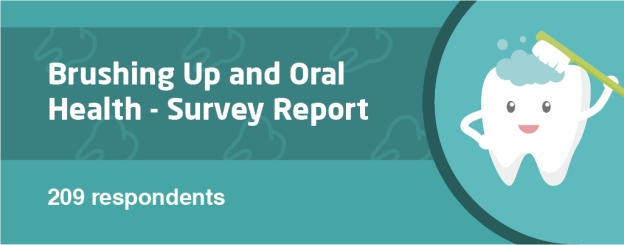Brushing up have been an inseparable activity of our daily habit. Since we were child our parents taught us to routinely brush our teeth so that we would never have any cavities and did not have to visit dentist very often. However, as we grow older, our parents were no longer controlling our tooth brushing habit and our habit might be changed. According to this premise, we asked our 209 respondents in nationwide about their tooth brushing habit. Random sampling was applied as the sampling technique. The confidence level of this survey was 95% with only 5% level of margin error.
First of all, we asked our respondent about their brushing habit. As we were child, our parents might teach to brush our teeth at least three times a day. However, our finding shows that most Indonesian brushes their teeth twice a day, while only 17% of them routinely brush three times a day.
The first finding shows that there was a shifting brushing habit between our childhood and adult times. However, we also found that as people get older, they were more likely to brush their teeth after dining. At this point, age became an important variable that could be further examined in the future studies. Moreover, we also asked our respondent about their tooth brushing times. Three moments were mentioned by our respondent such as morning shower, evening shower, and before going to bed.
Besides age, gender also became an intervening variable that may cause different motivations of tooth brushing. Although both male and female brushed their teeth to maintain their healthy teeth and fresh breath, but it turned out there were different specific motives. Men tend to brush their teeth since it has been part of their ritual habit, while women brushed their teeth to wipe food and maintain the cleanliness.
As we considered that brushing up was an important activity for our daily habit, we also asked our respondent about their biggest constraint to regularly increase their quantity of tooth brushing in a day. Most respondents said that being lazy and forgetful became their biggest constraints. In specific, respondents were tending to forget to brush their teeth at night, just before bed.
We then tried to map respondents’ preferences of brushing equipment. At first, we asked them to mention their favourite brand of toothpaste. Pepsodent was mentioned as the most favourite brand among others. Pepsodent has been long known as the market leader of Indonesian tooth paste. Following the position, Close Up and Formula were also mentioned by less respondents.
Besides tooth paste, we also asked our respondents to mention their tooth brush equipment. Although electric brush was already introduced to Indonesia, but most Indonesian would like to prefer manual than the electric one. Three brands were mentioned as the most used tooth brush among Indonesian such as Formula, Pepsodent, and Oral-B.
As our respondents once said that their motives of toothbrushing were to keep the fresh breath, we also asked about their mouthwash consumption habit. Up to this point, the penetration of mouthwash in Indonesian market was still remaining low. Only 23% of Indonesian use mouthwash and only 3% of them use dental floss after dining. However, it showed an interesting phase when it comes to Ramadhan month, Indonesian tend to consume mouthwash more often since they would like to keep their breath fresh during fasting. Listerine was considered as the most favourite brand of mouthwash among Indonesian.
According to the oral health advice, we should visit dentist at least twice a year to maintain the health of our teeth. However, this advice might not work very well. Only 18% of Indonesian said that they routinely visit dentist at least once in 1-6 months and most of them were women. The worse, half of our respondents even could not recall their last visit to dentist.
The lack number of respondents who regularly visit dentist encouraged us to ask about their biggest constraint of visiting dentist. Four main reasons were gathered through the survey. At first, they considered that visiting dentist would cost them very much. Second, they felt as never having any tooth problems so that they did not feel any urgency to visit dentist. Third, they scared of the dentist and their medication activities. At last, they considered that visiting dentist would not give them any significant benefit.
For more detail you can download XLS report at the button below (bahasa). JAKPAT report consists of 3 parts which are 1) Respondent Profile, 2) Crosstabulation for each question and 3) Raw Data. Respondent profile shows you demographic profiles ( gender,age range, location by province, and monthly spending). Cross tabulation enables you to define different demographicsegment preference on each answer.
You can also download PDF here:














